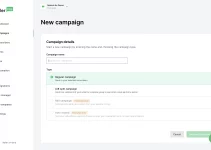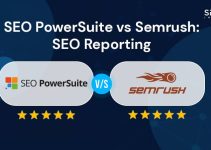Are you ready to take your business to the next level? Have you heard of sales funnels but don’t know where to start? Look no further than “Your First Funnel: A Step-by-Step Guide to Building Your First Sales Funnel.” This comprehensive guide will walk you through the process of creating a successful sales funnel, from identifying your target audience to optimizing your funnel for maximum conversions.
Whether you’re a seasoned business owner or just starting out, this guide is perfect for anyone looking to increase their sales and grow their business. With easy-to-follow instructions and helpful tips, you’ll be on your way to building your first sales funnel in no time. So why wait? Let’s get started on your journey to success today with “Your First Funnel.”
Your First Funnel: A Step-by-Step Guide to Building Your First Sales Funnel
Building your first sales funnel can seem daunting, but it doesn’t have to be. The key is to start with a clear understanding of your target audience and the goals you want to achieve. From there, you can create a series of landing pages, lead magnets, and email sequences that guide your prospects towards a sale. Remember to test and optimize your funnel regularly to ensure maximum conversions.

Your First Funnel: A Step-by-Step Guide to Building Your First Sales Funnel
Are you trying to increase your online sales but can’t seem to get the results you want? Building a sales funnel is a great way to optimize your conversion rates and drive more sales. However, if you are new to sales funnels, it can be overwhelming to know where to start. In this article, we’ll guide you through the process of building your first sales funnel, step-by-step.
Step 1: Define Your Target Audience
The first step in building a successful sales funnel is to define your target audience. Who are you trying to reach? What are their pain points and needs? Understanding your target audience is crucial in creating a funnel that resonates with your potential customers.
To define your target audience, start by creating buyer personas. A buyer persona is a fictional representation of your ideal customer. It includes details such as their age, gender, income, interests, and pain points. Once you have a clear understanding of your target audience, you can create content that addresses their needs and speaks to their pain points.
Step 2: Create a Lead Magnet
Now that you know your target audience, it’s time to create a lead magnet. A lead magnet is an incentive that you offer your potential customers in exchange for their contact information. This can be a free e-book, webinar, or even a discount code.
The lead magnet should be relevant to your target audience and provide value. It should solve a problem or answer a question that your potential customers have. Once you have your lead magnet, create a landing page where visitors can opt-in to receive it.
Step 3: Design Your Funnel
With the lead magnet and landing page in place, it’s time to design your funnel. A sales funnel typically consists of four stages: awareness, interest, decision, and action. Each stage of the funnel should have a specific goal and call-to-action.
For example, the awareness stage is where you introduce your brand and offer to potential customers. The goal of this stage is to create interest and educate your audience about your product or service. The call-to-action could be to download your lead magnet or sign up for your newsletter.
Step 4: Build Your Landing Pages
Now that you have your funnel designed, it’s time to build your landing pages. Each stage of the funnel should have its own landing page that is optimized for conversion. This means that the page should have a clear headline, compelling copy, and a strong call-to-action.
One of the best practices for building landing pages is to keep it simple. Don’t overwhelm your visitors with too much information or too many options. Keep the focus on the call-to-action and make it easy for visitors to take the next step.
Step 5: Set Up Your Email Campaign
With your landing pages in place, it’s time to set up your email campaign. An email campaign is a series of emails that are sent to your subscribers over time. The goal of the email campaign is to nurture your leads and move them through the funnel.
Each email in the campaign should have a specific goal and call-to-action. For example, the first email could be to thank the subscriber for downloading your lead magnet and provide additional value. The second email could be to introduce your product or service and provide social proof.
Step 6: Create Your Thank You Page
After a visitor completes a call-to-action, they should be directed to a thank you page. The thank you page should acknowledge the action they took and provide additional value. For example, if they downloaded your lead magnet, the thank you page could provide a link to a related blog post or offer a discount code.
Step 7: Drive Traffic to Your Funnel
With your funnel in place, it’s time to drive traffic to it. There are many ways to drive traffic to your funnel, including social media, paid advertising, and SEO. The key is to focus on the channels that your target audience is most likely to use.
Step 8: Analyze Your Results
As you start driving traffic to your funnel, it’s important to analyze your results. Use tools like Google Analytics to track your traffic, conversions, and bounce rates. This information will help you optimize your funnel and improve your conversion rates.
Step 9: Optimize Your Funnel
Based on your analysis, you can start optimizing your funnel. This could include testing different headlines, copy, and call-to-actions. The goal is to improve your conversion rates and drive more sales.
Step 10: Scale Your Funnel
Once you have optimized your funnel and have a steady flow of traffic and conversions, it’s time to scale. This could include expanding your advertising efforts or creating additional funnels for different products or services.
In conclusion, building a sales funnel is a great way to optimize your conversion rates and drive more sales. By following these ten steps, you can create a funnel that resonates with your target audience and moves them through the decision-making process. With patience and persistence, you can build a successful sales funnel that drives long-term growth for your business.
Frequently Asked Questions
Here are some common questions and answers about building your first sales funnel:
What is a sales funnel?
A sales funnel is a marketing strategy that guides potential customers through a series of steps towards making a purchase. The funnel is made up of different stages, such as awareness, interest, decision, and action. The goal of a sales funnel is to convert leads into paying customers by providing them with targeted information and offers.
Building a sales funnel involves creating content and marketing materials that are tailored to each stage of the funnel. This can include email campaigns, landing pages, social media ads, and more. By understanding your target audience and their needs, you can create a sales funnel that effectively moves them towards a purchase decision.
Why do I need a sales funnel?
A sales funnel can help you increase conversions and sales by guiding potential customers towards making a purchase. By providing targeted information and offers at each stage of the funnel, you can build trust and relationships with your audience. This can help you stand out from the competition and establish your brand as a trusted authority in your industry.
Without a sales funnel, you may be missing out on potential sales and leaving money on the table. By implementing a sales funnel, you can streamline your marketing efforts and improve your ROI.
How do I create a sales funnel?
Creating a sales funnel involves several steps, including identifying your target audience, mapping out the stages of your funnel, and creating content and marketing materials for each stage. You may also need to set up a landing page or website, create email campaigns, and use social media and other channels to promote your funnel.
To create an effective sales funnel, it’s important to understand your audience’s needs and pain points, and to provide them with valuable content and offers at each stage of the funnel. You may also need to test and optimize your funnel over time, to ensure that you’re getting the best results possible.
How long does it take to build a sales funnel?
The time it takes to build a sales funnel can vary depending on the complexity of your funnel and the resources you have available. Some businesses may be able to create a simple funnel in a matter of hours, while others may need to spend several weeks or even months developing and testing their funnel.
It’s important to remember that building a sales funnel is an ongoing process, and you may need to make adjustments and updates over time to ensure that it’s effective. By tracking your metrics and analyzing your results, you can continually improve your funnel and increase your conversions and sales.
What are some common mistakes to avoid when building a sales funnel?
Some common mistakes to avoid when building a sales funnel include not understanding your audience’s needs and pain points, creating a funnel that is too complex or confusing, not providing enough value at each stage of the funnel, and not testing and optimizing your funnel over time.
To avoid these mistakes, it’s important to do your research and understand your audience, to keep your funnel simple and easy to navigate, to provide valuable content and offers at each stage, and to continually test and optimize your funnel for better results.
In conclusion, building your first sales funnel may seem daunting at first, but with this step-by-step guide, you should feel confident in your ability to create a successful funnel. Remember to keep your target audience in mind and always provide value to them through your content. It’s also important to continually test and optimize your funnel to ensure it’s working at its full potential.
Don’t be afraid to seek advice and guidance from experts in the field, or to try out new strategies and techniques, as experimentation can often lead to breakthroughs in your funnel’s performance. With time and effort, your first funnel can become a valuable asset to your business and help you achieve your sales goals.
So, take the first step and start building your first sales funnel today. With dedication and persistence, you’ll be on your way to creating a successful and profitable online business.



